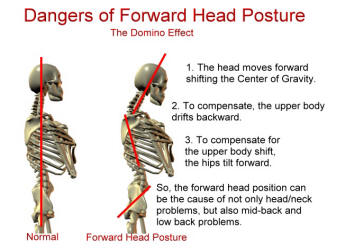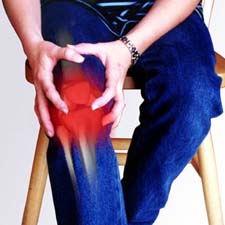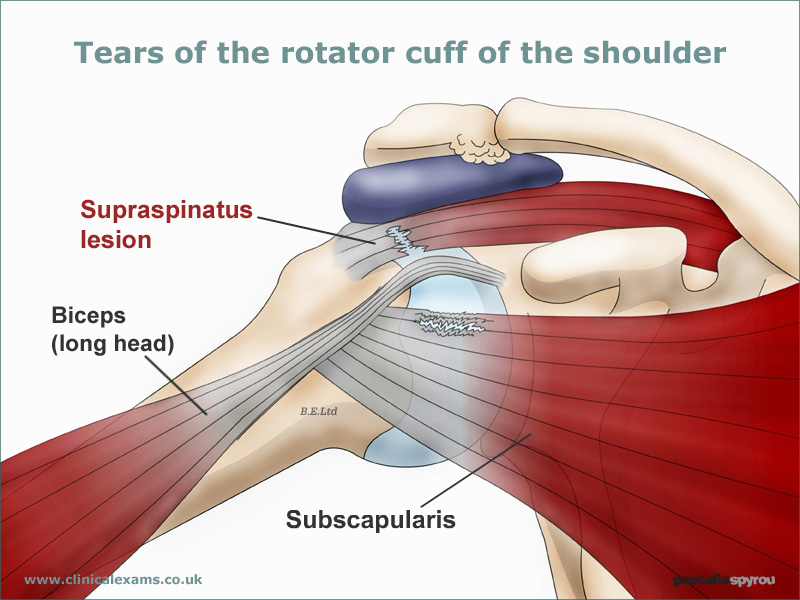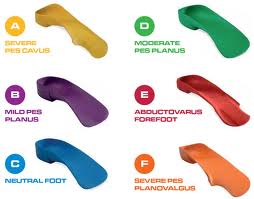Range of Motion Physical Therapy Newsletter October 13
Interesting Apps and Couch – 5K Training Plan:Now that the summer has left us behind some of you maybe considering getting back into a regular routine of getting fit and healthy. I found this fantastic programme for those of you who don’t like or don’t have the time to visit a gym, it helps you get strong and workout without having to leave the house.
Max Capacity Training is a 16 minutes, 3 times a week, 12 week Body-weight Training programme: I originally researched this programme for a mother to give to her 13 yr old son, she wanted him to get stronger in a safe way without weights. The workout comes with an app that has a timer and you can record your progress and improvements from week to week. The app also has great explanations of how to do each of the exercises. The programme takes you through a programme of safe body weight exercises that are to be done for 50 secs x 4 exercises x 4 sets, it is guaranteed to work up a sweat while building strength, it is safe for all ages and those looking to get fit and healthy again.
Couch to 5K Training Programme: for those of you who are not put off by the dark evenings or cold weather, I have included a link to a great Couch – 5K run programme. Couch to 5K programmes have become very popular recently in helping people get back into running in a safe controlled manner, they are designed for beginners or lapsed runners looking to start running. The programme will ease you back into running over a course of 9 weeks, taking you from a walk and run programme to being able to run non stop for 5K.
If you are feeling especially brave and committed, you could start both these programmes and run them on alternative days so you are getting a good mix of cardio and strength training. If you are looking to loose weight as well it is important to have a healthy balanced diet.
The links are above in the title name, also remember these are only guides, if you have any health issues or concerns please see a health professional before starting the programmes.

Neck Pain and Deep Neck Flexor Exercises:Earlier in the month I wrote a blog on my website outlining types of Neck Pain, I also included some go to exercises to help strength the neck and prevent developing chronic neck pain in the future.
Visit the blog to learn more or contact me should you wish to have an assessment and treatment for neck pain.
Neck Pain and Deep Neck Flexor Exercises
Range of Motion Physical Therapy Newsletter Sept 13
This week I am delighted to say I am working at my clinic in Lucan for 3 years, and fortunately my business has gone from strength to strength. I would like to thank you for your continued support throughout the past 3 years. Thankfully I do not have to see you all very often, (which is a good sign) but I am grateful for your support and any referrals you have passed my way.Thanks also to the members of the local clubs I work with, who have support for over 3 years; Lucan Harriers, Lucan Sarsfields GAA, North Kildare Rugby Club and Nass Tri Club.I am told once you get over the 3 year hump, it is plane sailing from here; and ….. if you can make a business successful in a recession it will be flying on the other side….to be honest I am happy to continue to take it year by year and hope for another great 3 years.Thank you again for your ongoing support.
Ankle Dorsiflexion
Earlier in the month I wrote a blog on the importance of dorsiflexion and how if you are not able to dorsiflex at the ankle it can impact how you walk and run, among other things. When you walk you are required to dorsiflex during the gait cycle to enable you to bring your foot back in front of you, if you can not dorsiflex sufficiently you may have to hike your hip so as your foot can clear the ground and avoid falling over!!! An alternative to hiking the hip is the body looks to pronate the ankle joint, over pronation can result in repetitive knee, hip or back pain, to name a few.A quick test you can do to check if you have any muscle or ankle joint restriction is as follows:
Stand facing a wall with your foot about 3″ from the wall.
Keeping your foot flat on the ground bring your knee as close to the wall as possible, trying to touch your knee off the wall, make sure your foot stays flat on the ground, hips level and your heel is not off the ground.
Compare this with both feet.
If you can not touch your knee off the wall you may have a restriction in your ankle joint or tight calf muscles.
In an ideal situation you should be able to get your knee out over your foot about 3 – 4″
Dorsiflexion Test Video
Click on to the link below to learn more and see an ankle mobility exercise you can use to help ensure you maintain good ankle range of motion.
Rotator Cuff Tear Rehabilitation Plan
At Range of Motion Physical Therapy I work with a couple of Rugby and GAA teams and as a result I have worked with a number of players following Rotator Cuff Repair Surgery. In this blog I will discuss an overview plan of how best to rehab your Rotator Cuff following a type I tear.
The shoulder joint (Glenhumeral Joint) is described as a ball and socket joint and compared to a golf ball on a tee, this is due to the fact the humeral head is much larger than the surface it articulates with (Glenoid Fossa). As a result of this instability the Rotator Cuff muscles, ligaments, glenoid labrum and shoulder capsule, all have to work together to stabilise and move the shoulder.
The Rotator Cuff is made up of 4 muscles: Subscapularis, Supraspinatus, Infraspinatus and Teres Minor. Rotator cuff tears can occur in these muscles from falling on your arm, arm tackling in rugby or any large sudden force applied to the arm. Most Rotator cuff tears involve the Supra or Infraspinatus muscles.
Rotator cuff repair technique uses anchors and sutures, sutures are placed on both sides of the tear, the tendon is approximated back to the bone with various suture patterns to decrease local stress. Rehabilitation is vital to regaining movement, strength and function of the shoulder as soon as possible following surgery.
Phase 1: Rehab appointments should begin 1 week following surgery.
The goals of phase 1 are: reduce pain and swelling, maintain active ROM of Elbow and Wrist joints and protect healing tissue.
They type of exercises would be active range of motion of Elbow and Wrist joints, ball squeezes and passive range of motion for shoulder flexion and abduction, within pain range (0-50 degrees)
Phase 2: approx 2 weeks after surgery:
Goals are to restore passive and active range of motion exercises of shoulder, activate shoulder and scapular stabilisers of abduction (0-30 degrees) and correct postural dysfunctions
Exercises should include some gentle shoulder mobilisations e.g. Pendulum Exercises. Isometric internal and external rotation in (0-30 degrees) of abduction. Scapular pinches with the arm in neutral.
Client can progress to Phase 3 when they have full passive ROM and normal IR and ER strength, this can take between 5-7 weeks after surgery.
Phase 3: 5-7 weeks after surgery.
Goals are to achieve full ROM in all directions, normal strength in IR and ER at (0 degrees of abduction).
The types of exercises to help progress clients are Open Chain exercises e.g. cane exercises and Closed Chain exercises such as wall exercises. Shoulder IR and ER exercises with theraband or weights. Side lying shoulder Flexion and Abduction with scapular stabilisation.
Phase 4: usually 3 months after surgery
Goals of this phase is to achieve normal range of motion, strength and endurance at 90 degrees of abduction and scapular stabilisation. Develop proprioceptive strength and control and sport/work specific movements.
Progress exercises to include Multi-plane shoulder active range of movement with gradual increase in speed of movement e.g. Half kneeling shoulder chops. Continue open & closed chain exercises with scapula strengthening e.g. Half Kneeling Pulls.
Patient may look to begin some light jogging and building the time/distance they run over a period of a few weeks.
Phase 5: usually 4-5 months following surgery
Goals of this phase are full Rotator Cuff strength at 90 degrees of shoulder abduction and supraspinatus strength. It is important to focus on work/sport specific movements to ensure correct postural function and control.
Exercises should include work/sport specific strengthening exercises. Continue to strengthen rotator cuff in 90 degree abduction, building in strengthening and dynamic overhead exercises. Were required include throwing, gym or swimming programmes.
This programme is an outline, patients respond and heal at different rates. Similarly there may also be some minor set backs so it is advisable to progress at a gradual rate and use pain as a main indicator to the client to follow and adhere to.
Please contact us should you like more advise or wish to make an appointment.
Range of Motion Physical Therapy Newsletter August 13
Knee Pain & Exercises:

Over the past month I have treated a large number of clients with knee pain, with this in mind a revisited a blog I had written last year and expanded on what are the best exercises to help with knee pain.I also wrote a blog on chondromalacia patellae, the most common cause of chronic knee pain, the condition is also called the patellofemoral syndrome(PFS).To read more on the causes and symptoms and how to manage knee pain follow the links below!!Knee Pain
Open & Closed Chain Exercises
Rotator Cuff Tear Rehabilitation
Over the past 5 months I have been working with two clients who suffered Rotator Cuff tears, both having fallen on an outstretched arm.

Both clients required surgery, with one of them being told it was a very severe tear and will take slow consistent rehabilitation and not to rush things.With this in mind I wrote a blog on a rehab programme for a Type I tear and what is expected at each phase on an ongoing basis. You can read the programme by following the link below.Rotator Cuff Tear Rehab Programme.
Exercises for Knee Pain
Exercises for Knee Pain at Range of Motion Physical Therapy Dublin
Last year I wrote a short blog on Patellafemoral Pain Syndrome PFPS here, in this follow up article I will expand on some more information on some exercises that are proven to help PFPS with strengthen quads and glutes, while not causing excess load on the patella.
The cause of PFPS can be put down to quite a large number of factors, muscle weakness (Glutes & Quads), poor motor control (incl. core strength and proprioception), altered biomechanics (such as ankle pronation) and soft tissue issues (tight ITB / Psoas / Hamstrings etc..)
The key to managing PFPS is a graded exercise programme without aggravating symptoms. The best types of exercises prescribed are Open & Closed Chain exercises.
Open Chain Exercises: are when your foot is free to move during an open chain exercise. These types of movements tend to isolate a single muscle group and a single joint. For example, the one joint involved during a leg extension is the knee and the muscle group it isolates is the quads. Other examples of open chain exercises include leg curls, clams and leg flexion and extensions.
Closed Chain Exercises: these are the opposite to open chain exercises in that your foot is in a fixed position, normally with the ground. Closed chain exercises work multiple joints and multiple muscle groups at once. For example, a squat involves the knee, hip and ankle joints, and multiple muscles groups (quads, hamstrings, hip flexors, calves and glutes).
Closed chain exercises can be done with body weight alone and progressed with added weight, bands etc.. Other examples of closed chain exercises include step ups / step downs, mini squats, single leg squats and lunges.
The angle of the knee is a very important factor when carrying out exercises to help reduce knee pain. There are varying degrees of knee flexion which help ensure minimum load on the knee joint while recruiting as much muscle strength. Ideal ranges for Closed Chain exercises are 0 – 45° of knee flexion, working lower as a progression.
For Open Chain exercise it is best to work 0 – 20° for the likes of quad sets or straight leg raises and 45 – 90° for leg extensions.
An exercise programme for this injury is based on a comprehensive assessment and gradual progressions, pain is the key indicator for the exercise progressions, in that there should be little or no pain when carrying out the exercises.
Contact us here should you wish to learn more or book in for an assessment.
- See more at: http://www.romphysicaltherapy.ie/index.php/exercises-for-knee-pain-open-chain-okc-and-closed-chain-ckc-exercises/#sthash.FJLM2fDA.dpuf
Off the Shelf Orthotics
This month at Range of Motion Physical Therapy Dublin, I attended a workshop/sales conference on a new custom made off the shelf orthotic. How could there be an off the shelf custom made orthotic, I hear you say…. well I asked myself the same question when I got the invite to attend, so I decided to see for myself.
There are generally two schools of thought when it comes to orthotics, one camp says you should be able to strengthen the weak arches in the foot to prevent a foot pronating. Then there is the camp who recommend the use of a custom made orthotic to support the foot and problem solved…at costs of normally around €200 – €250. In addition there are people with genetically flat feet that have been passed down from their parents and no amount of exercise will help correct that.
To be honest I think I sit in both camps, as in, when I see client with a arch issue that maybe contributing to their hip or knee pain I will often recommend they purchase an off the shelf pair of othotics, normally in the region of €35. I will ask them to wear them while we work on strengthening the intrinsic muscles in the foot. Admittedly the off the shelf orthotics you get in your local chemist can be of poor quality in terms of durability and support, they will do a job on a short term basis.
However, having attend the Quadrastep conference I was very impressed with their product and how it would be perfect for elderly clients and those who do not respond to arch strengthening exercises.
The Quardrastep System was designed by Roberta Nole a Poditratis and Physical Therapist with 20 years experience. Through her research she designed 6 custom made orthotics based on what she feels are 6 generic foot types, they also come in a narrow or wide versions and variety of sizes.
With this product there is no need for casting, foot impressions, foot scans, instead I can asses your foot type by specific foot landmarks, asses your walking gait and the wear patterns on your foot (hard skin). Based on this I will choose the correct orthotic from the choice of 12 and supply you with them immediately!
One of the best things about this product is the cost, they are a fraction of the cost of the custom orthotic and offer the same support and durability as a custom made made orthotic.
Please contact me should you wish to learn more or make an appointment for an assessment.
Range of Motion Physical Therapy July Newsletter 13
Off the Shelf Orthotics:
There are generally two schools of thought when it comes to orthotics, one camp says you should be able to strengthen the weak arches in the foot to prevent a foot pronating and then there is the camp who recommend the use of a custom made orthotic to support the foot and problem solved…at costs of normally around €200 – €250.
To be honest I am still not convinced by either, bearing in mind there are people with genetically flat feet and no amount of exercise will help correct that.
So when I see client with a fallen arch that could be contributing to their hip or knee pain I will often recommend they purchase an off the shelf pair of othotics, normally in the region of €35 – €40. In the interim we work on strengthening the intrinsic muscles in the foot.
Admittedly, the off the shelf orthotics you get in your local chemist can be of poor quality in terms of durability and support, they will do a job on a short term basis.
However, having attend the Quadrastepconference I was very impressed with their product and how it would be perfect for elderly clients and those who do not respond to arch strengthening exercises.
The Quardrastep System was designed by Roberta Nole a Podiatrist and Physical Therapist with 20 years experience. Through her research she designed 6 custom made orthotics based on what she feels are 6 foot types, they also come in a narrow or wide versions and on variety of sizes.
The fact these orthotics are off the shelf but specifically designed to 6 foot types, means they can be produced and sold at a fraction of the cost of the custom orthotic and offer the same support and durability as a custom made orthotic.
Check out the Orthotics on my website should you wish to learn more or contact me if you wish to make an appointment for an assessment.
Range of Motion Physical Therapy June Newsletter 13
Lower Back Exercises:
Millions of people suffer from back pain of varying degrees, some of which is intermittent and diffuse to disabling. Injury, poor posture, weak muscles, muscles spasms, and general stress on the body are some of the contributing factors to back pain. Treatment for back pain can be straight forward for some, but for others specific exercises for the back can offer relief from lower back pain and help strengthen the back.
The overall health of your lower back can be helped by performing some daily exercises. These exercises should be approached with some caution, any low back issue could be aggravated by performing these exercises incorrectly. Exercises for the back are available below, however you should always seek an assessment from a medical professional in advance to beginning any type of self-therapy or low back exercises.
Below are a number of exercises that should help improve low back mobility, ideally help to relieve back pain and strengthen the lower back:
Bracing: Learning to brace your core muscles is one of the first ways to protect your back from injury, it is important to brace when bending down, lifting, turning, getting out of bed or the car. To brace you simply contract your pelvic muscles enough so you can feel them tighten, your stomach should not change shape i.e. do not just suck in your stomach. It is important to practice this exercise when walking and moving. Bracing Exercise
http://www.youtube.com/watch?v=2MYjjOXL4Y8
Pelvic Tilt Exercises: The pelvic tilt exercise is a subtle way of gradually introducing mobility and movement into your lower back. Start by lying flat on the floor, and bring knees up to a bent position. Gently use your abs for this lower back exercise, and keep feet relaxed. Inhale and as you exhale, roll your pelvis back so as the small of your back presses against the floor, as you exhale then roll your pelvis forward in the opposite direction. Low Back Mobility
http://www.youtube.com/watch?v=Udi3JjvSnMU
Child Pose & Back Extension Exercise: These exercises are a couple of additional low back mobility exercises, they are designed to help further increase the flexibility of the back. These exercises should be performed gently and within any pain range. These exercises are done to encourage flexion and extension of the lower back. Child Pose & Back Extension
http://www.youtube.com/watch?v=wczNmI56Dhk
Bird Dog Exercise: This exercise is a great progression exercise to introduce some strength and core activation, like all the exercises above it must be pain free. The objective of the exercise to build up to working the upper and lower body together but starting to practice them separately. You start on all fours with hands under shoulders, shoulder width apart and knees under hips, hip distance apart. Gently activate your core by bracing and being by sweeping one arm out to shoulder height and repeat, it is important to maintain a static core and torso, particularly when changing from one arm to the next. You repeat the same for the legs and when you feel you have sufficient strength and coordination you can do both of them simultaneously. Bird Dog Exercise
To further progress the bird dog you can add in a thera band for resistance, this is great to help generate rotational control from one side of the body to the next, good exercise for swimmers to help improve their rotations in the water. Resisted Bird Dog Exercise
http://www.youtube.com/watch?v=XkUMV7mWX0k
Remember these are all exercises that should be coached correctly and done with no pain, if you suffer from back pain I recommend an assessment before trying any of these exercises, these videos are only for demonstration purposes and are specifically designed to be used as part of a rehab/treatment programme. If you would like further information please feel free to contact me at www.romphysicaltherapy.ie
Low Back Exercises
Lower Back Exercises from Range of Motion Physical Therapy:
At Range of Motion Physical Therapy Dublin I see a lot of people suffering from back pain of varying degrees, some of which is intermittent and diffuse to completely disabling pain.
Acute injury, poor posture, weak muscles, muscles spasms, and general stress on the body are some of the contributing factors to back pain. Treatment for back pain can be straight forward for some through mobilisations or soft tissue work, but for others specific exercises for the back can offer relief from lower back pain and help strengthen the back.
The overall health of your lower back can be helped by performing some daily exercises. These exercises should be approached with some caution, any low back issue could be aggravated by performing these exercises incorrectly. Exercises for the back are available below, however you should always seek an assessment from a medical professional in advance to beginning any type of self-therapy or low back exercises.
Below are a number of exercises that should help improve low back mobility, ideally help to relieve back pain and strengthen the lower back:
Bracing: Learning to brace your core muscles is one of the first ways to protect your back from injury, it is important to brace when bending down, lifting, turning, getting out of bed or the car. To brace you simply contract your pelvic muscles enough so you can feel them tighten, your stomach should not change shape i.e. do not just suck in your stomach. It is important to practice this exercise when walking and moving. Bracing Exercise
Pelvic Tilt Exercises: The pelvic tilt exercise is a subtle way of gradually introducing mobility and movement into your lower back. Start by lying flat on the floor, and bring knees up to a bent position. Gently use your abs for this lower back exercise, and keep feet relaxed. Inhale and as you exhale, roll your pelvis back so as the small of your back presses against the floor, as you exhale then roll your pelvis forward in the opposite direction. Low Back Mobility
Child Pose & Back Extension Exercise: These exercises are some additional mobility exercises, they are designed to help further increase the flexibility of the back. These exercises should be performed gently and within any pain range. These exercises are done to encourage flexion and extension of the lower back. Child Pose & Back Extension
Bird Dog Exercise: This exercise is a great progression exercise to introduce some strength and core activation, like all the exercises above it must be pain free. The objective of the exercise to build up to working the upper and lower body together but starting to practice them separately. You start on all fours with hands under shoulders, shoulder width apart and knees under hips, hip distance apart. Gently activate your core by bracing and being by sweeping one arm out to shoulder height and repeat, it is important to maintain a static core and torso, particularly when changing from one arm to the next. You repeat the same for the legs and when you feel you have sufficient strength and coordination you can do both of them simultaneously. Bird Dog Exercise
To further progress the bird dog you can add in a theraband for resistance, this is great to help generate rotational control from one side of the body to the next, good exercise for swimmers to help improve their rotations in the water. Resisted Bird Dog Exercise
Remember these are all exercises that should be coached correctly and done with no pain, if you suffer from back pain I recommend an assessment before trying any of these exercises, these videos are only for demonstration purposes and are specifically designed to be used as part of a rehab/treatment programme. If you would like further information please feel free to contact me at you contact us at Range of Motion Physical Therapy Dublin www.romphysicaltherapy.ie
Diaphragmatic Breathing
Recently at Range of Motion Physical Therapy Clinic Dublin, I wrote a blog on how a client of mine has benefited from exercises based around diaphragmatic breathing and getting him to change a habit of life time. I wanted to come back to the topic of Diaphragmatic breathing in terms of it benefits and show you some techniques on how to master diaphragmatic breathing and progress yourself through the process.
When the body is under either emotional or physical stress our sympathetic nervous system is stimulated, this has a number of physical responses within our body. Our heart rate rises, we start to sweat, our muscles tense and our breathing becomes rapid and shallow. With most of us we start to breath quicker through our chest, this cycle can over stimulate our sympathetic nervous system, leading to an imbalance that can effect our physical health.
Diaphragmatic breathing can be used to directly influence these stressful changes causing a direct effect on the parasympathetic nervous system, resulting in relaxation and a reversal of the changes on the sympathetic nervous system. I see this with players on the field when they are winded, they can recover and relax quickly by having them to breath calmly through their nose and out through their mouth. By using diaphragmatic deep breathing their bodies return to a more relaxed state more quickly.
I see a lot of clients with chronic stress, particularly those in desk jobs, chronic stress causes a lot of restriction in the upper chest, neck and shoulder muscles, resulting in a decrease in neck and shoulder range of motion. This coupled with us sitting hunched over our computers typing all day, all compounds this problem resulting in chronic upper body issues.
This can all result in “chest” breathing, you can check to see if you are a chest breather by placing your left hand on your chest and your right hand on your abdomen. As you breathe, see which hand rises more. If your left hand rises more, you are a chest breather. If your right hand rises more, you are an abdomen breather.
Chest breathing is inefficient, as with the client in my previous blog his chest breathing resulted in less oxygen transfer to the blood and poor delivery of oxygen and nutrients to tissues, resulting in him tiring very quickly in physical exercise.
Thankfully you can train yourself to make Diaphragmatic breathing habit. At Range of Motion Physical Therapy Dublin I have put together two videos that show a 4 stage programme to help progress you through the steps.
Diaphragmatic Breathing 1
Diaphragmatic Breathing 2
Please contact us should you wish to make an appointment to discuss the above blog.






